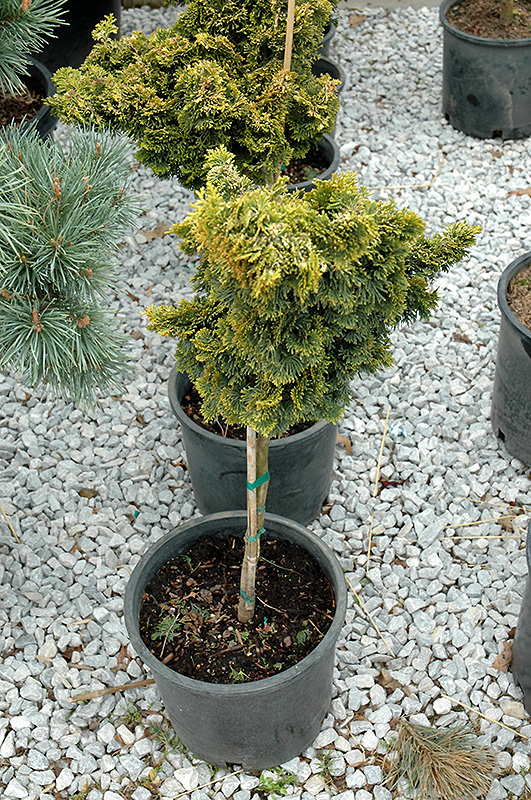Snowkist Dwarf Hinoki Falsecypress (tree form)
Description
An excellent dwarf tree form for small landscapes, containers, or rock gardens; rich green foliage is contrasted by stunning white variegation at the tips; visually very interesting
Landscape Attributes
Snowkist Dwarf Hinoki Falsecypress (tree form) is a dense multi-stemmed evergreen shrub, selected and trained to grow in a small tree-like form with the primary plant grafted high atop a standard. Its relatively fine texture sets it apart from other landscape plants with less refined foliage.
Snowkist Dwarf Hinoki Falsecypress (tree form) is recommended for the following landscape applications;
Planting & Growing
Snowkist Dwarf Hinoki Falsecypress (tree form) will grow to be about 3 feet tall at maturity, with a spread of 15 inches. It has a low canopy with a typical clearance of 3 feet from the ground. It grows at a slow rate, and under ideal conditions can be expected to live for 40 years or more.
This shrub does best in full sun to partial shade. It prefers to grow in average to moist conditions, and shouldn't be allowed to dry out. It is not particular as to soil type or pH. It is highly tolerant of urban pollution and will even thrive in inner city environments, and will benefit from being planted in a relatively sheltered location. Consider applying a thick mulch around the root zone in winter to protect it in exposed locations or colder microclimates. This is a selected variety of a species not originally from North America.
Snowkist Dwarf Hinoki Falsecypress (tree form) makes a fine choice for the outdoor landscape, but it is also well-suited for use in outdoor pots and containers. With its upright habit of growth, it is best suited for use as a 'thriller' in the 'spiller-thriller-filler' container combination; plant it near the center of the pot, surrounded by smaller plants and those that spill over the edges. Note that when grown in a container, it may not perform exactly as indicated on the tag - this is to be expected. Also note that when growing plants in outdoor containers and baskets, they may require more frequent waterings than they would in the yard or garden.

